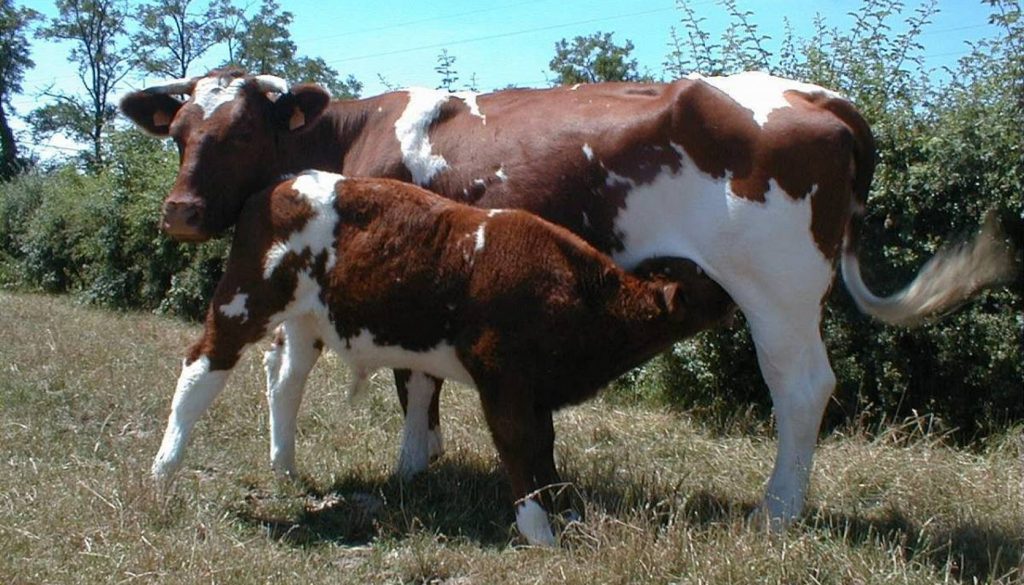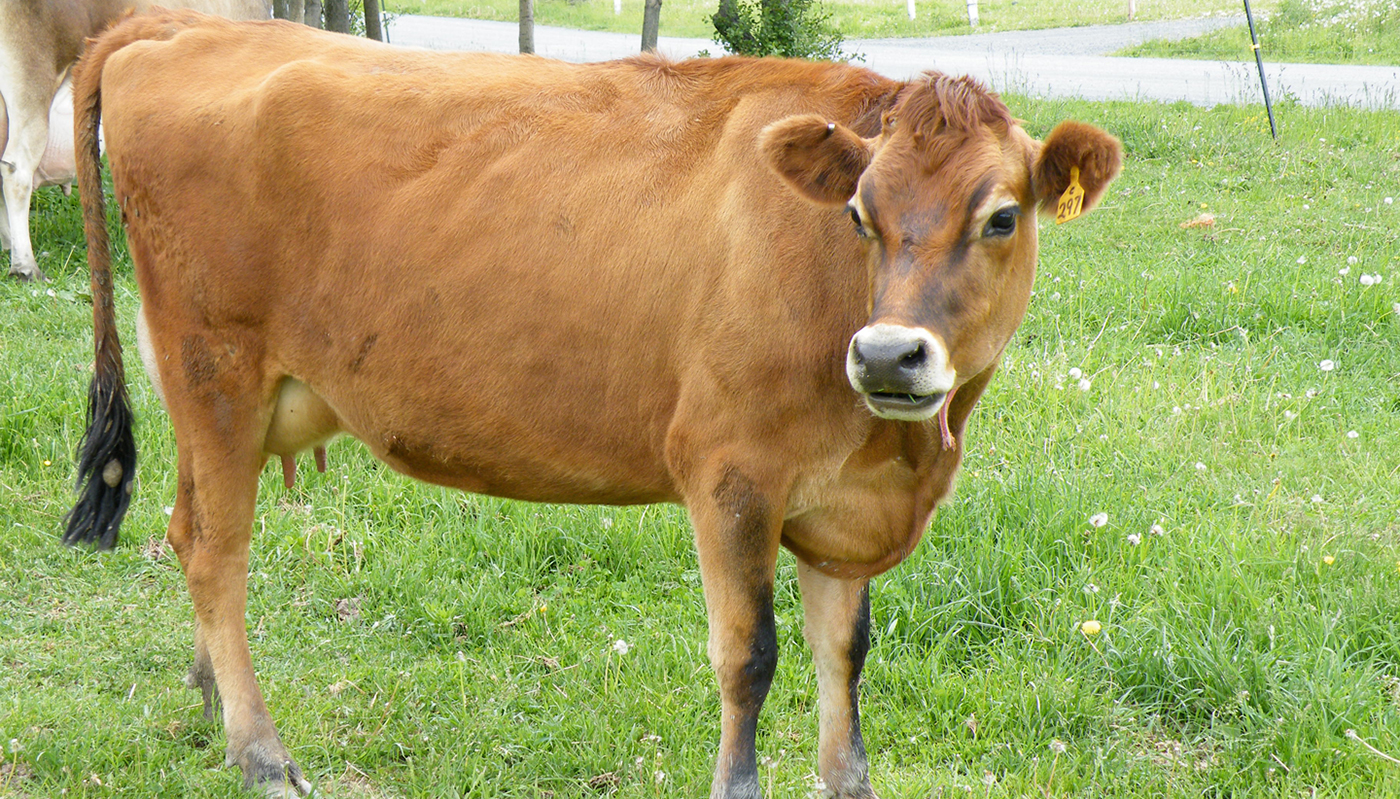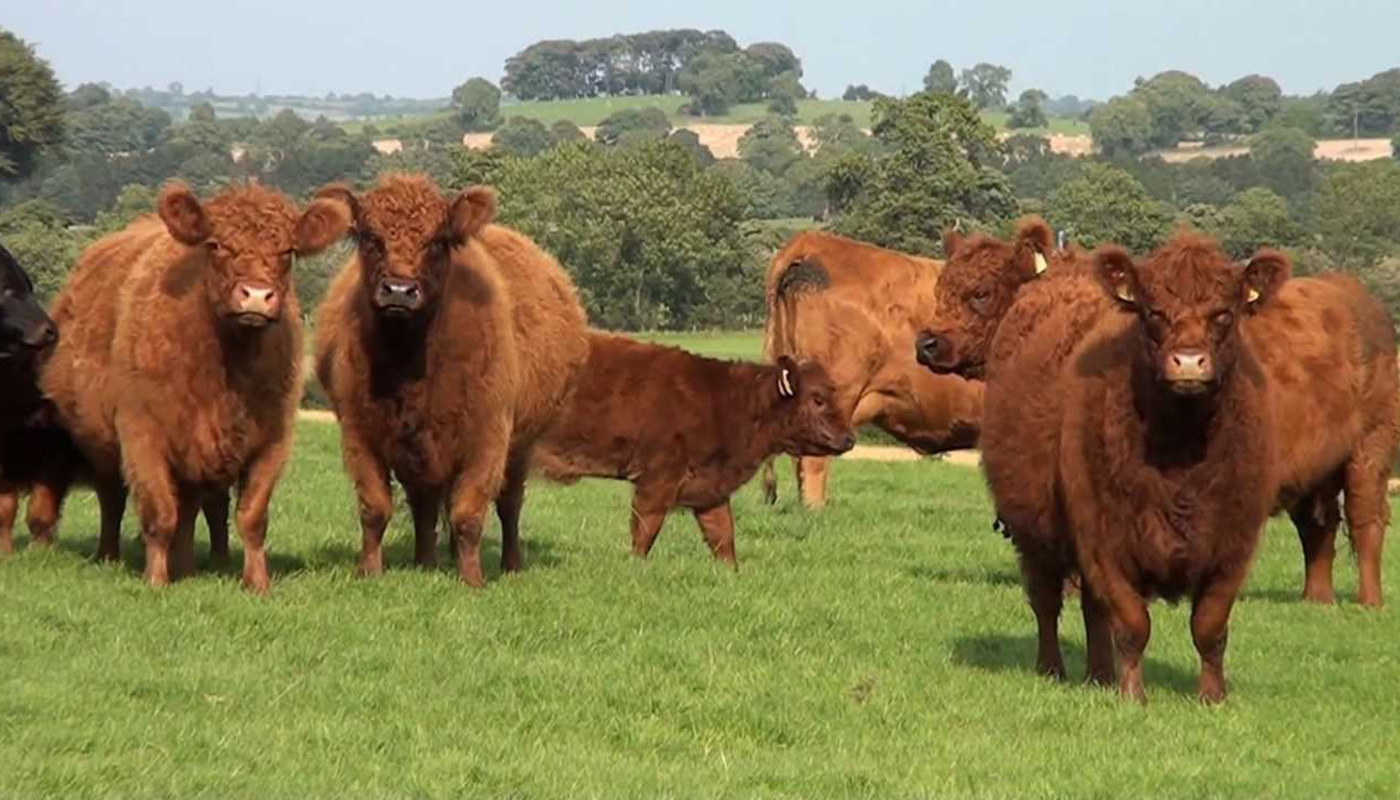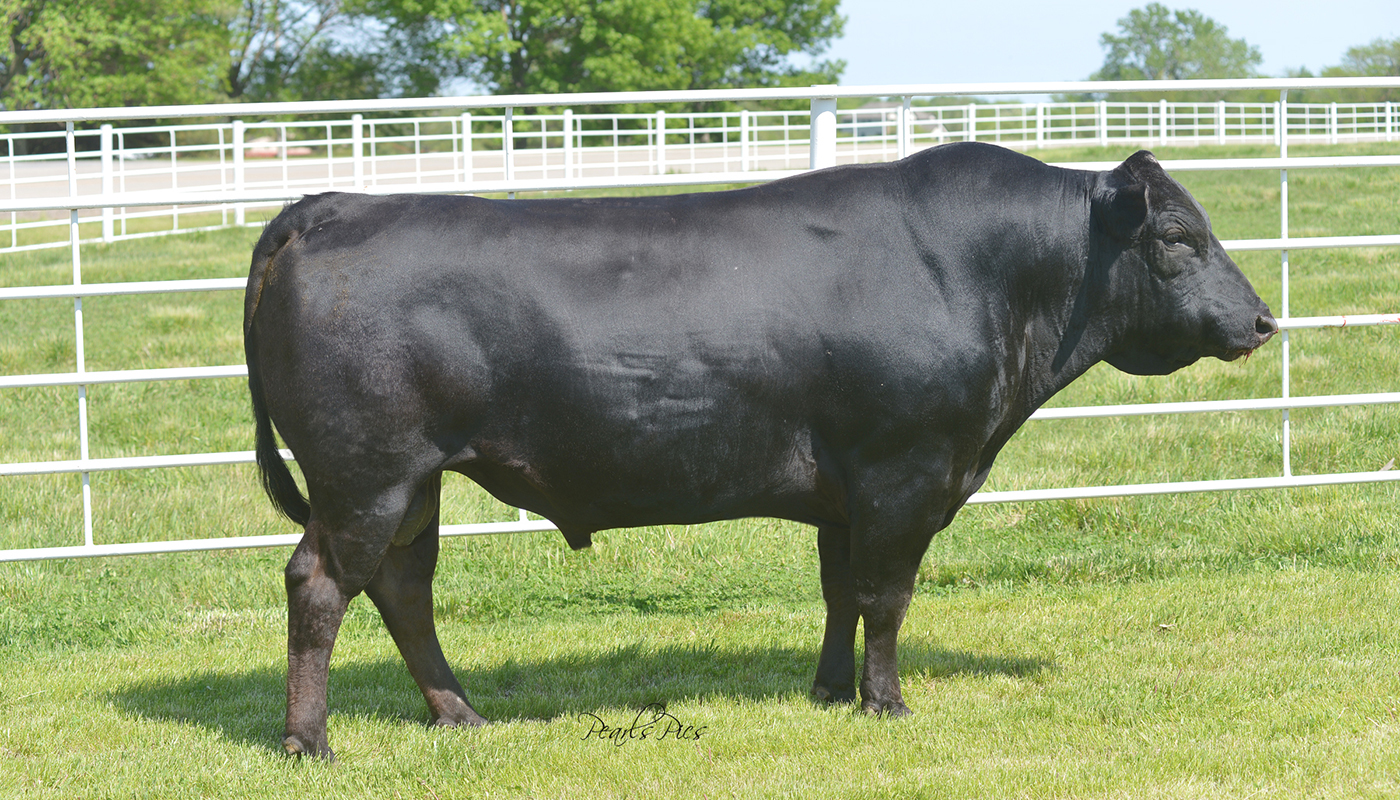
The Maine Anjou is a pretty French breed of cattle that are well known amongst the cattle world for their quite even disposition, hardiness and ease of handling. They are popular amongst young breeders’ clubs in America and also for small farmers looking for a cattle breed that is low-maintenance and cost efficient for their farming environment/needs.
MAINE ANJOU BREED OF CATTLE QUICK PROFILE OVERVIEW
|
|
|---|---|
| Born on the lush grasslands of northwestern France the Maine Anjou is an all-around good choice of breed for the homestead/small farm to those of the larger ones. | |
| Country of Origin: | France |
| Other Names: | Rouge des Pres or Durham-Mancelle |
| Main Purpose: | Meat |
| You may Also Like: | 35 Best Cattle Breeds for Milk – Dairy Cattle |
| You may Also Like: | 47 Best Cattle Breeds for Meat – Beef Cattle |
| Can be used for | Breed, Meat, Milk, Draft |
| Ideal Climate: | Heat, Cold, Most Climates |
| Conservation Status: |
Not listed by the *ALC Status/Rarity: Not at risk |
| Health Issues? | No known health issues |
| Good Starter Cattle? | Novice to intermediate Cattle farmer/keeper level |
| Cattle Associations: | American Main Anjou Association |
| Cattle Clubs: | Please refer to the American Main Anjou Association for more information on the Maine Anjou beef cattle breed |
| Where to buy them? | Please refer to the American Main Anjou Association for more information on the Maine Anjou beef cattle breed |
| Child Friendly? | Livestock should not be left unattended around unsupervised children |
| General Information: | Breeders of the Maine-Anjou cattle breed were/are small farmers that are looking to maximize income for their smaller area of land.
They are a quick and easy fattening breed that can efficiently turn feed into top quality beef. In America, the Maine-Anjou are popular market animals competing in various cattle shows and exhibitions. They are very popular with many “club calf” breed in the Southeastern and Midwest regions. |
| Note: *ALC stands for American Livestock Conservancy | |
PHYSICAL CHARACTERISTICS |
||||||||||||||||||||||||||||||||
|---|---|---|---|---|---|---|---|---|---|---|---|---|---|---|---|---|---|---|---|---|---|---|---|---|---|---|---|---|---|---|---|---|
| The Main-Anjou is a beautiful French breed of cattle with long well-defined lines, sturdy long legs and a long face with a wide forehead and slightly up-tilted nose. The males a heavier, stockier and more muscular than the females giving their bodies are more rounded chunky appearance. | ||||||||||||||||||||||||||||||||
| Size: | Large | |||||||||||||||||||||||||||||||
|
||||||||||||||||||||||||||||||||
COW BREEDING & MILKING INFORMATION |
|
|---|---|
| Most Cattle produce milk but not all of them are used in the dairy Cattle capacity for their milk. Cows only calve once a year and should have 12 to 14-month inter-calving cycle. They were once used for their milk that is of a good quality, but their milk yields were not too high. These days they are primarily used for their beef production. The cows are good, nurturing mothers with very good maternal instincts that will protect their young at all costs. They are fertile, easy birthers with minimal to no birthing problems. | |
| Breeding Period/cycle: | Usually lasts 6 to 24 hours Most ave. 12 to 16 hours Cows usually come on heat every 21 days. |
| Estrous cycle: | Ave. 17 days to 24 days Heifer – usually ave. 20 days Cows – usually ave. 21 days |
| Gestation Period: | Usually, around 279 to 287 days but most gestation is 283 days. Cows that are carrying bull calf’s their gestation period is usually a little longer than cows that are carrying heifer calves. |
| No. Calves/Litter: | 1 calf at a time. Cows rarely have twins or triplets, but it can happen |
| Lactation Period: | Cows lactation period can last for up to about 10 months (305) days. |
| Milking From: | 1 to 6 weeks after Calving |
| Drying off Period: | The cow should have a 12 to 14-month inter-calving cycle. Drying off period for around 60 days before she can calve again. |
| Milk Quality: | Good, High in Butterfat |
| Milk Ideal for: | Calves |
| You may Also Like: | 35 Best Cattle Breeds for Milk – Dairy Cattle |
CATTLE MEAT PRODUCTION INFORMATION |
||||||||
|---|---|---|---|---|---|---|---|---|
| Their meat has a really good taste and the meat is nicely marbled to give it a succulent and tender quality. They have a good carcass yield with quite a high ratio of meat to bone. | ||||||||
| Meat Production? | N/A | |||||||
|
||||||||
| You may Also Like: | 47 Best Cattle Breeds for Meat – Beef Cattle | |||||||
CATTLE SKIN PRODUCTION INFORMATION |
||||||||
|---|---|---|---|---|---|---|---|---|
| Most meat Cattle will have a skin by-product, and these are usually used in some form or just as a hide. They are not specifically bred for their skin products, but they are a beef cattle breed and the skin is a by-product of this. | ||||||||
| Skin Production? | No, Quality: Good | |||||||
| Skin is used to Produce: | Calf/cow skin leather products such as shoes, car seats, fine leather coats, gloves, handbags, belts, furniture, rugs, etc. | |||||||
|
||||||||
HISTORY
The Mancelle breed of cattle that was found in the northwestern part of France were large animals that were well muscled with a light red coat that was spotted with white. The land in these parts was excellent for raising beef cattle as it was both tillable and grassland.
A landowner in these areas, Count de Falloux imported Durham cattle from England in 1839. He crossed the Durham cattle breed with the Mancelle cattle breed and the cross was extremely successful. By 1850 Durham-Mancelle cattle were an award-winning breed at French agricultural fairs.
The Society of Durham-Mancelle Breeders was started in 1908 and was founded at the Chateau-Gontier in the Mayenne district. The name was changed to the Society of Maine-Anjou Cattle Breeders in 1909. The name was derived from the Maine and Anjou River valleys.
The first Maine-Anjou cattle arrived in the United States came through Canada in 1969 and were introduced to America through artificial insemination.
The Maine-Anjou Society was started in 1969 and include members from both Canada and the United States.
The association’s name was changed when their headquarters were moved in 1971 to the International Maine-Anjou Association and it was changed to the American Maine-Anjou Association in 2001.
Video
USEFUL LINKS
- Purebred Dairy Cattle Association
- American Dairy Association
- National Association of Animal Breeders
- American Dairy Science Association
- United States Cattlemen’s Association
- National Cattlemen’s Beef Association
- American National Cattlewomen
- Beef Cattle Breed Associations
- National Cattlemen’s Beef Association
- Fur Commission USA
- North American Meat Institute
- American Livestock Conservancy
- Animal Shelter (ASPCA)
- American Veterinary Medical Association
- American Animal Welfare Society
- American Animal Control
- American Society of Animal Science
- United States Department of Agriculture
 Dutch Belted Cattle Breed – Everything You Need to Know
Dutch Belted Cattle Breed – Everything You Need to Know Parthenaise Cattle Breed – Everything You Need to Know
Parthenaise Cattle Breed – Everything You Need to Know Spanish Fighting Bull – Everything You Need to Know
Spanish Fighting Bull – Everything You Need to Know Beefmaster Cattle Breed – Everything You Need to Know
Beefmaster Cattle Breed – Everything You Need to Know Sahiwal Cattle Breed – Everything You Need to Know
Sahiwal Cattle Breed – Everything You Need to Know Vechur Cattle Breed – Everything You Need to Know
Vechur Cattle Breed – Everything You Need to Know Jersey Cattle Breed – Everything You Need to Know
Jersey Cattle Breed – Everything You Need to Know Galloway Cattle Breed – Everything You Need to Know
Galloway Cattle Breed – Everything You Need to Know Simmental Cattle Breed – Everything You Need to Know
Simmental Cattle Breed – Everything You Need to Know Aubrac Cattle Breed – Everything You Need to Know
Aubrac Cattle Breed – Everything You Need to Know Wagyu Cattle Breed – Everything You Need to Know
Wagyu Cattle Breed – Everything You Need to Know Shorthorn Cattle Breed – Everything You Need to Know
Shorthorn Cattle Breed – Everything You Need to Know